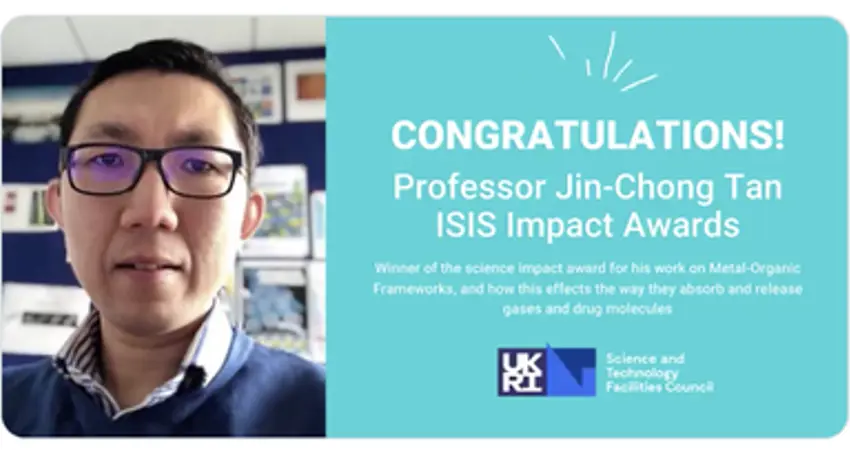20 Aug 2020
Professor Jin-Chong Tan wins STFC ISIS Science Impact Award
For group’s work on lattice dynamics in Metal-Organic Frameworks

Professor Jin-Chong Tan (Nanoscale Engineering)
Professor Jin-Chong Tan (Professor of Engineering Science (Nanoscale Engineering), Fellow and Tutor in Engineering Science) has won the 2020 ISIS Science Impact Award for his group’s work on lattice dynamics in Metal-Organic Frameworks, and how this affects the way they absorb and release gases and drug molecules.
The ISIS Impact Awards celebrate the socio-economic impact generated by those who use the ISIS Neutron and Muon research facility. ISIS Neutron and Muon Source is based at the STFC Rutherford Appleton Laboratory in Oxfordshire and is a world-leading centre for research in the physical and life sciences. It is owned and operated by the Science and Technology Facilities Council.
Professor Tan leads the Department's Multifunctional Materials & Composites Laboratory, where his group develops porous metal-organic frameworks, multifunctional thin films, polymer membranes and bespoke nanocomposite systems targeting real-world applications.
Since 2012, the group has used neutron vibrational spectroscopy at ISIS to investigate the distortions of Metal-Organic Framework (MOF) materials that enable them to absorb and release target molecules. MOFs are open-framework materials that combine metal nodes and organic linkers to create crystalline frameworks that have unique chemical and physical properties, which cannot be achieved in purely inorganic or organic compounds. These unique properties can be altered by changing the composition of the MOF, leading to the intelligent design of different MOF systems with applications in technologies from gas separation to drug delivery, and from photonics to sensors.
How the group has gained a deeper understanding of these materials and developments arising from that work are explained in a case study by ISIS.




